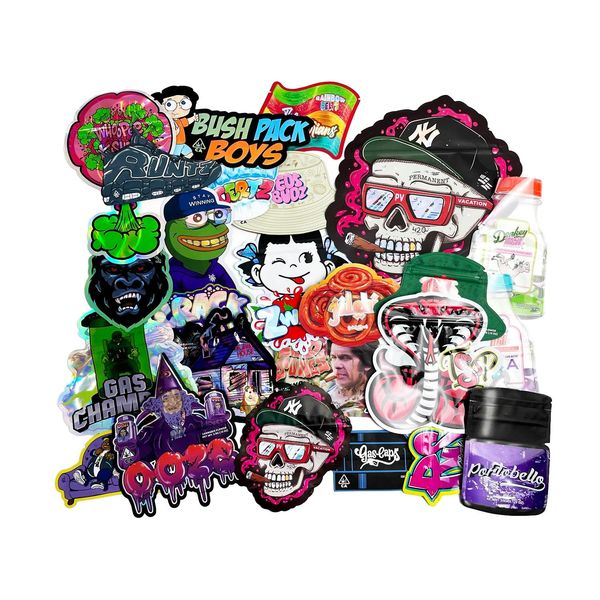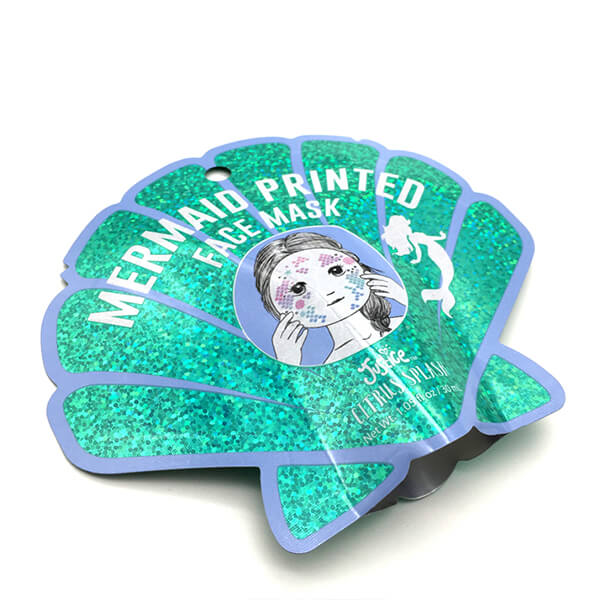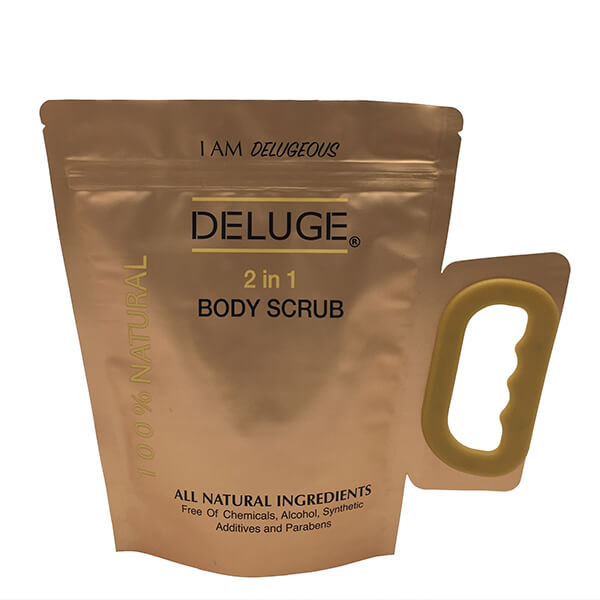Home » Bags & Pouches » Shaped Pouches » Shaped Pouch With Ziplock
Shaped Pouch With Ziplock
Shaped pouch with ziplock is meant for packaging more than one-time serve products.
Please note that we have a MOQ for our pouch. For pouches in stock, the MOQ is 500 pcs. For customized pouches, please see the MOQ as followed:
1, Digital Printing — 500 pcs
2, Gravure Printing — 5,000pcs
Rinpac assists you throughout your project: bag shape, material, thickness, capacity and printing options. Please contact us or mark your requirements on the inquiry quotation.
Order single or thousands of items at a time. Our warehouse and flexible shipping options are available for last-minute, deadline critical orders.
- Free Sample
*Customization is always available, please mark down your need in cart or just contact us.
Specification
| Size | Custom sizes.It depends on your requirement. |
| Structures/Materials | Custom materials.PET / FOIL / POLY, PET / POLY, PET / MET PET / POLY,etc. |
| Thickness | 50Mircons-200Mircons (2Mil-8Mil) |
| Function | Punch Hole, Handle, Ziplock, Spout |
| Printing | Glossy Vanishing, Matte Finishing, Soft Touch, Hot Stamping |
| Optional Features | Degassing Valve / Ziplock / Foil Tie / Clear Window |
| Technical | Apouch which is irregular in shape.Designed to stand out from the competition.Can be designed to customer shape requirement(\”within specification).Can use special finishes to enhance the design,with options of adding zippers and hang-sell features. |
| Application | Confectionery -(Candy,Chocolates,Fruit Chews)Liquid-(Fruit Juice,Sauces,Energy Drink) Novelty,Seasonal items |
Video
Request A Quote
Need something helped in a short time? We’ve got a plan for you.
Shaped Pouch With Ziplock – Rinpac
In the fast-paced world of packaging, innovation takes center stage, and one such revolution that has captivated the market is the advent of shaped pouches with ziplock mechanisms. As we delve into the evolution of packaging and the rise of this inventive solution, the spotlight turns to Rinpac, a trailblazer in this domain.
1. Introduction
Packaging is more than just a protective covering for products; it’s a dynamic field that constantly evolves to meet consumer needs. Shaped pouches with ziplock, exemplified by Rinpac, have become a symbol of this evolution.
2. The Rise of Shaped Pouches in Packaging
2.1 Evolution of Packaging Industry
Traditional packaging methods are giving way to modern solutions, and shaped pouches have emerged as a frontrunner. The journey from rigid structures to flexible, innovative pouches signifies a paradigm shift in the packaging landscape.
2.2 Advantages of Shaped Pouches
Shaped pouches offer versatility and adaptability, accommodating various product shapes and sizes. Their lightweight nature reduces transportation costs and environmental impact, aligning with the growing focus on sustainability.
3. Understanding Ziplock Mechanism
3.1 Convenience and Practicality
Ziplock mechanisms have revolutionized how consumers interact with packaging. The convenience of resealability enhances practicality, prolonging the freshness of contents and reducing food wastage.
3.2 Ziplock Technology in Rinpac Pouches
Rinpac has mastered the art of integrating ziplock technology into shaped pouches, setting a benchmark for user-friendly, resealable packaging solutions.
4. Rinpac: A Pioneer in Shaped Pouches with Ziplock
4.1 Company Overview
Rinpac stands as a testament to innovation in packaging. Established with a commitment to providing cutting-edge solutions, the company has become synonymous with shaped pouches that redefine packaging norms.
4.2 Innovation in Packaging Solutions
Rinpac’s commitment to innovation goes beyond aesthetics. The company continually invests in research and development to offer groundbreaking packaging solutions that cater to diverse industry needs.
5. Applications of Shaped Pouches with Ziplock
5.1 Food Packaging
Shaped pouches with ziplock are gaining traction in the food industry. The ability to reseal and preserve freshness makes them an ideal choice for snacks, condiments, and other consumables.
5.2 Pharmaceutical Industry
In the pharmaceutical sector, maintaining the integrity of products is crucial. Shaped pouches with ziplock ensure secure packaging, contributing to the safety and efficacy of pharmaceuticals.
5.3 Consumer Goods
From electronics to personal care products, the versatility of shaped pouches allows for tailored packaging solutions. Rinpac caters to the diverse needs of consumer goods manufacturers.
6. Customization Options in Rinpac Shaped Pouches
6.1 Tailoring Packaging to Specific Needs
Rinpac goes beyond the one-size-fits-all approach. The company offers customization options, allowing businesses to tailor shaped pouches according to their specific requirements.
6.2 Branding Opportunities
Shaped pouches serve as a canvas for branding. Rinpac understands the importance of visual appeal and provides branding opportunities that enhance product visibility on the shelf.
7. Sustainability in Shaped Pouches
7.1 Environmentally Friendly Materials
Rinpac acknowledges the importance of environmental sustainability. Shaped pouches are crafted using eco-friendly materials, contributing to a greener future.
7.2 Recycling Possibilities
The recyclability of shaped pouches aligns with the global push towards eco-conscious practices. Rinpac ensures that their packaging is not only innovative but also environmentally responsible.
8. Consumer Experience and Feedback
8.1 User-Friendly Packaging
The user experience is paramount, and shaped pouches with ziplock elevate it. Consumers appreciate the ease of use and the added convenience that these pouches bring to their daily lives.
8.2 Positive Impact on Brand Perception
Brands adopting Rinpac’s shaped pouches with ziplock convey a message of modernity and consumer-centricity. Positive feedback from users enhances brand perception in the market.
9. Challenges in Shaped Pouch Packaging
9.1 Perceived Costs
While shaped pouches offer numerous benefits, some businesses are hesitant due to perceived higher costs. However, the long-term advantages often outweigh the initial investment.
9.2 Overcoming Consumer Resistance
Change can be met with resistance. Educating consumers about the benefits of shaped pouches and ziplock mechanisms is essential to overcoming initial skepticism.
10. Future Trends in Shaped Pouch Packaging
10.1 Technological Advancements
As technology evolves, so does packaging. The integration of smart features, such as temperature indicators and interactive elements, is a glimpse into the future of shaped pouch packaging.
10.2 Sustainable Innovations
The future lies in sustainable practices. Rinpac continues to explore and implement innovations that reduce environmental impact, setting the stage for a more sustainable packaging industry.
11. Conclusion
In conclusion, shaped pouches with ziplock, epitomized by Rinpac, represent a transformative phase in packaging. Their adaptability, user-friendly features, and commitment to sustainability make them a preferred choice across industries.
FAQs
Are shaped pouches with ziplock only suitable for food products?
No, Rinpac’s shaped pouches find applications in various industries, including pharmaceuticals and consumer goods.
How does Rinpac address environmental concerns with its packaging?
Rinpac uses environmentally friendly materials and encourages recycling of their shaped pouches.
Can businesses customize the shape and design of Rinpac’s pouches?
Yes, Rinpac offers customization options to tailor pouches according to specific business needs.
What challenges do businesses face when adopting shaped pouches?
Perceived costs and consumer resistance are common challenges, but the long-term benefits often outweigh them.
What does the future hold for shaped pouch packaging?
The future involves technological advancements, including smart features, and a continued focus on sustainable innovations.








